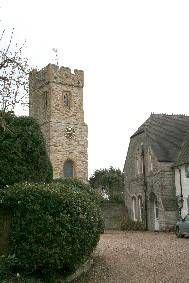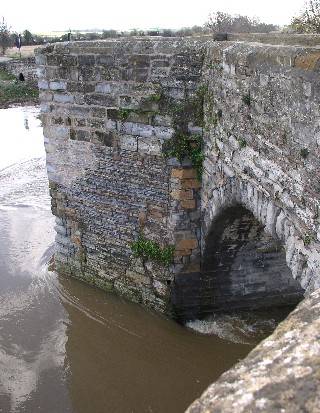The Archaeology of Bidford on Avon
Medieval and later Medieval Bidford

In the late 11th century Medieval Bidford was a sizable settlement with a population of at least 230 people. Activity would have focused around the church and the market place, which was a small square near the church.
St Lawrence Church and Vicarage
One of the most impressive structures present in Bidford is the medieval bridge.
Bidford Bridge
The bridge is likely to have been designed by the monks of Bordesley Abbey in Worcestershire. This is believed because between 1135 and the 1530s Bidford, and some of the surrounding area, belonged to the monks.

By 1449 the bridge was in a poor state. John Carpenter (Bishop of Worcester) offered a year's Indulgence to anyone who contributed to its repair. This meant they could be pardoned instead of punished for a sin.
The bridge was rebuilt in 1545 using stone from the demolished priory at Alcester.
In 1644 Charles I's army destroyed part of the bridge as it fled south to Oxford. It lay in disrepair for 6 years. Whilst it was being repaired in 1650 one of the arches was made higher than the others to allow boats through.
View looking down at the bridge
Most of the buildings on the High Street were built in the Post Medieval Period.
Clockwise from left to right - 44-48 High Street (16th Century), 2 High Street (17th Century), 50 High Street (17th Century), the Old Falcon Inn, Church Street (16th Century),

